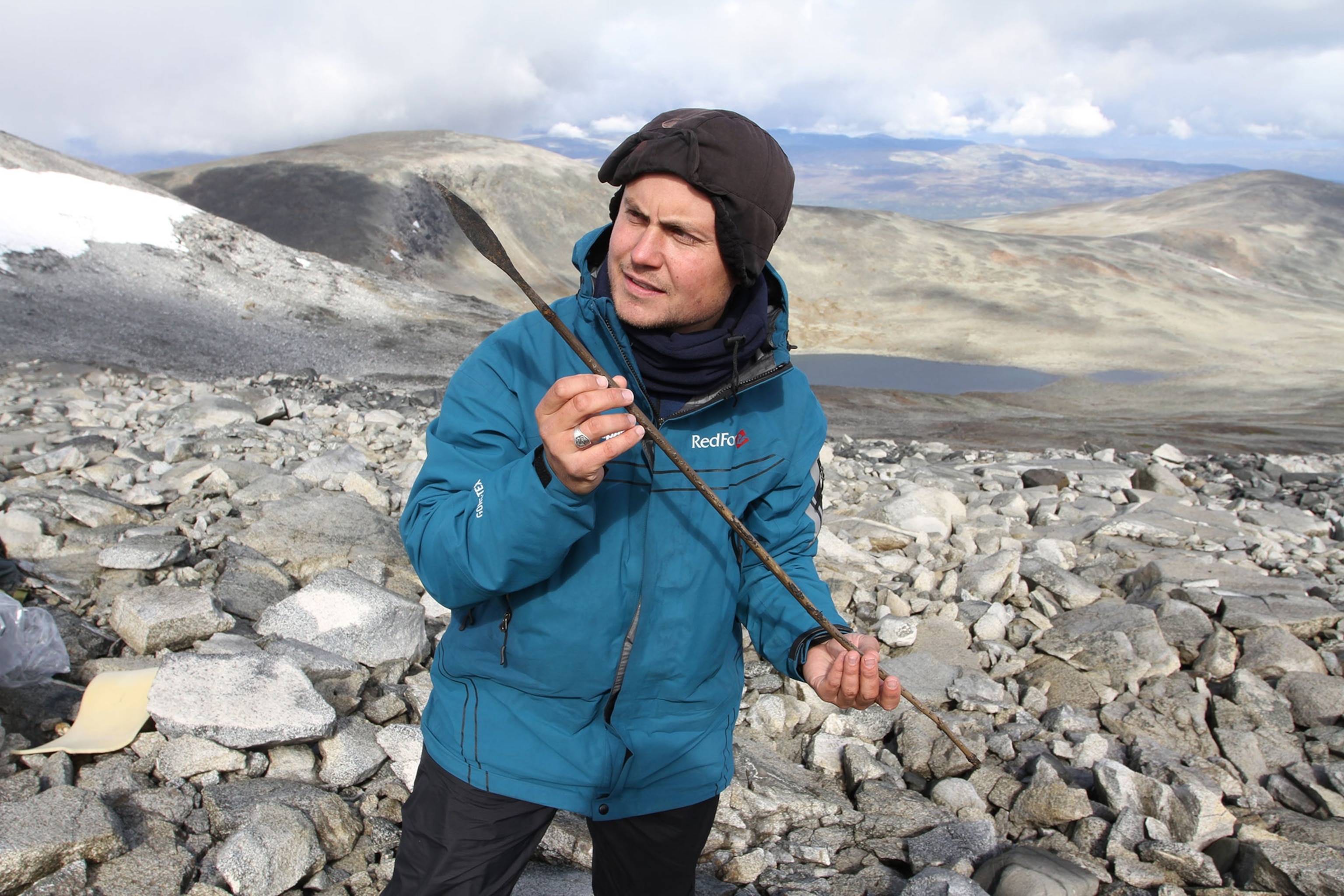
Melting Glaciers Could Reveal How Our Ancestors Dealt With Changing Climates
While some archaeologists dig with trowels and shovels, others use a warming planet to their advantage.
When Lars Pilø, co-director of the Glacier Archaeology Program at Oppland County Council, noticed Norway was experiencing a particularly warm autumn in 2006, the archaeologist turned to the mountains. If climate change was thawing glacial ice, what did that mean for the artifacts that were emerging from the melt? So, starting officially in 2011, Pilø and an international team took to Norway's icy Jotunheimen and Oppland mountains to see what ancient objects they could rescue from the snowmelt.
Over the years, the archaeologists uncovered thousands of artifacts, some of which date back 6,000 years. Since the ice acts like a giant freezer and preserves the objects, the finds look like they could have been uncovered yesterday. (Read: "Alaska's Thaw Reveals—And Threatens—A Culture's Artifacts")
"The moment these artifacts melt out of the ice, they're immediately vulnerable to the elements," says James H. Barrett, a University of Cambridge environmental archaeologist.
The glacier archaeologists detailed their findings in a Royal Society Open Science paper published January 24. Pilø and Barrett are authors on the paper.
Telltale Finds
From mid-August to mid-September of each year, the team trekked out to the Norwegian mountains. Working in two groups, they surveyed the edges to the melting ice, looking for objects that had become dislodged in the melting ice. (Related: "Top 10 Recent Scientific Discoveries in Antarctica")

"These [objects] are so remote that if you don't actually look for them, they will not be found," Pilø says.
Arrows, clothing, and the remains of skis and packhorses are some of the more than 2,000 artifacts that have been discovered, which the archaeologists dated to be thousands of years old. They found that some periods were richer in artifacts than other periods, showing how changing climate, social, and economic factors shaped the society over time.
Interestingly, the researchers found a large number of artifacts from the Late Antique Early Ice Age of the sixth and seventh centuries AD. Cooling conditions, Barrett says, made agriculture more difficult, so the society turned to hunting reindeer to make up for failed crops.
Discovering finds from the eighth to the tenth centuries AD, the team found how hunting styles changed. Supplementing traditional bow-and-arrow techniques, ancient hunters also began using more advanced trapping systems. An increase in artifacts dated from the period revealed there was a boom in population, mobility, and trade.
"We think that this type of intensive hunting … was unsustainable," Pilø says. "They were eradicating the reindeer."
But then, from the eleventh century onward, the team didn't identify many objects except for some Viking-era weapons. The bubonic plague in the mid-14th century would have further caused mountain activity to decrease, says Brit Solli of Oslo's Museum of Cultural History.
"Unlikely Beneficiaries"
Glacier archaeology is a relatively new field, says Pilø. Whereas traditional archaeology excavates with trowels and shovels, this team does minimal digging. Instead, they walk along the edges of melting ice to scope out freed objects and mark them with bamboo poles.
The team has to hike with heavy packs, and they use packhorses whenever possible. On occasion they must fly to particularly remote sites via helicopter, which saves time and energy but contributes to the greenhouse gases that perpetuate climate change. They use durable, Everest-rated tents to protect them from the cold.
Pilø says glacier archaeologists are "unlikely beneficiaries of global warming." As glaciers melt, some objects are freed from time capsules of ice. If glacier archaeologists aren't there to recover these stranded pieces, they could be destroyed by the elements and lost to the world.
"It's a very different world from regular archaeological sites," Pilø says. "It's really rewarding work."












